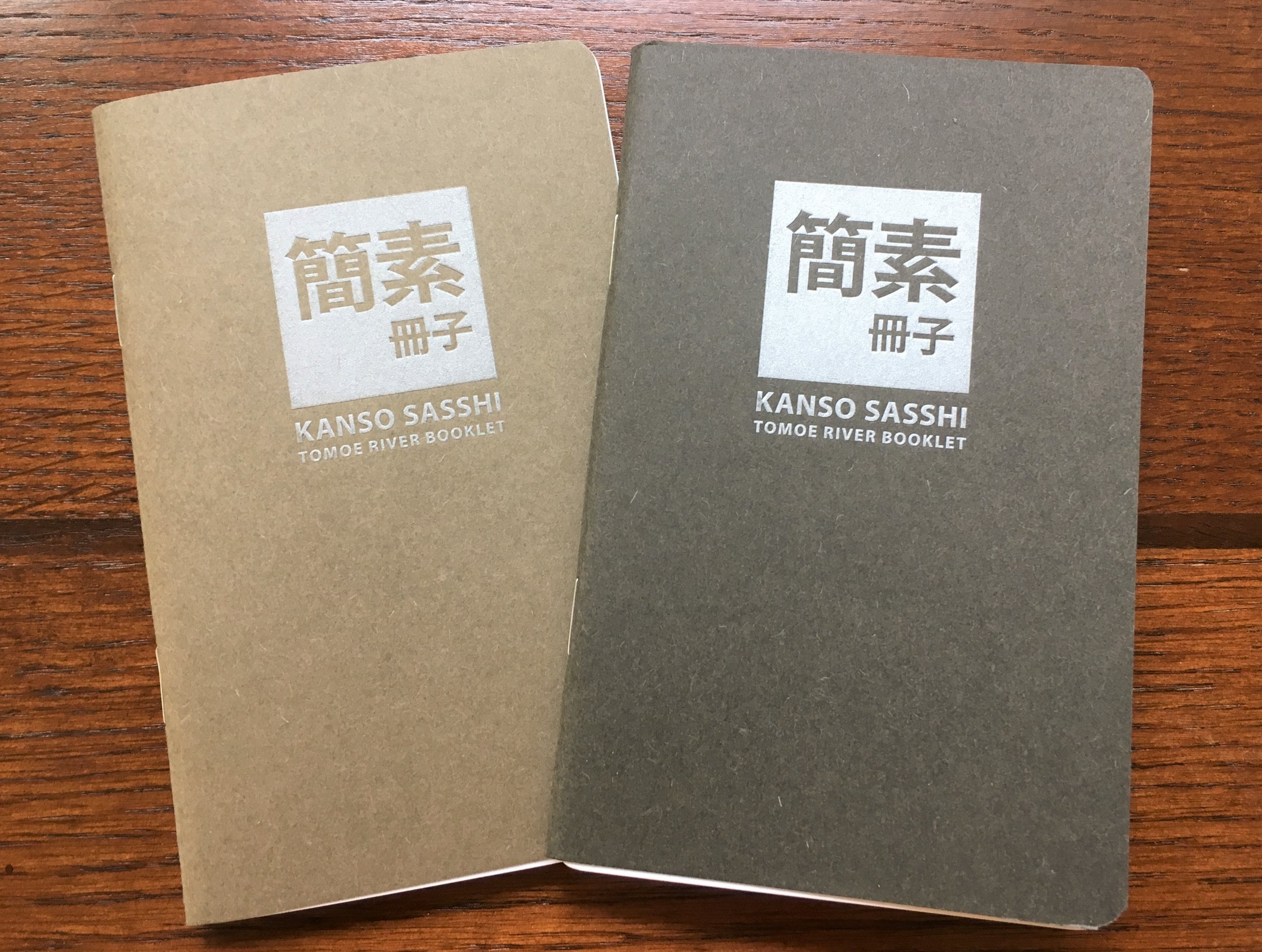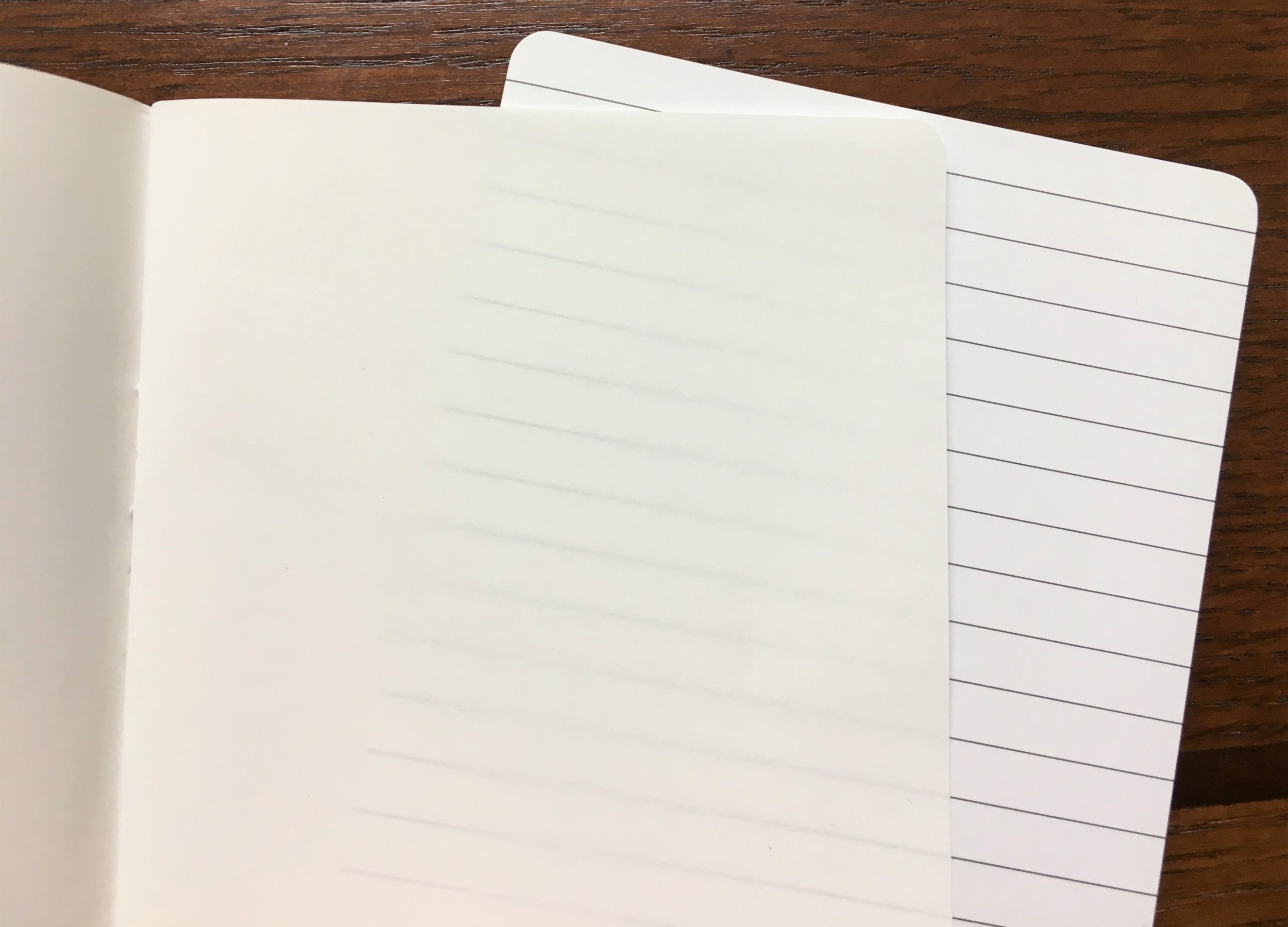(Sarah Read is an author, editor, yarn artist, and pen/paper/ink addict. You can find more about her at her website and on Twitter.)
Sometimes my favorite pocket notebooks don't play nice with fountain pens, and sometimes they don't have enough pages for my project, and sometimes JetPens comes to the rescue and puts 48 sheets (96 pages) of 52 gsm Tomoe River paper into a beautiful pocket-sized notebook.
The Kanso Sasshi boolklets are minimalistic with just enough branding that I don't end up writing in it upside down or backwards. The name Kanso Sasshi translates into "simplicity booklet" and that is indeed what you get--a pack of two simple notebooks. The covers are embossed in silver with the branding on the front and at the bottom of the back. They are staple-bound with a soft cardstock cover. The pages are blank, but each book comes with its own line guide that can be placed behind the page.
The paper, naturally, is a dream to write on. It works well with any writing instrument with no bleeding or feathering. There is substantial show-through with darker inks, but not enough to deter me from using both sides of the page. It would be trickier, though, to see the line guide through the back side of a page that had a lot of dark ink on it. The well-coated paper has a long dry time for liquid inks and some inks may smear on its smooth surface. If you're using your booklet for quick notes, you may want to have a square of blotting paper handy.
This wee book ticks a lot of my wishlist boxes in a pocket notebook. It makes a perfect travel journal for when you want to pack light, or a planning book for a longer project, or notes for a conference. It can be used as a sketchbook or journal. It's packed with practicality. My only concern is that it might not be as durable as some pocket notebooks. As wonderful as Tomoe River paper is, it's not terribly hardy when it comes to the rough-and-tumble life of a pocket notebook. My notebooks tend to look like they've seen a war by the time I'm done with them, and this book may be too delicate to live in my pocket. As an insert in a traveler-style cover, though, it would be protected and fabulous. So maybe I just need (another) one of those. And then a bunch more of these.
(JetPens provided this product at no charge to The Pen Addict for review purposes.)
Enjoy reading The Pen Addict? Then consider becoming a member to receive additional weekly content, giveaways, and discounts in The Pen Addict shop. Plus, you support me and the site directly, for which I am very grateful.
Membership starts at just $5/month, with a discounted annual option available. To find out more about membership click here and join us!






















